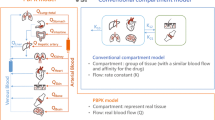Abstract
Practitioners of the art and science of pharmacometrics are well aware of the considerable effort required to successfully complete modeling and simulation activities for drug development programs. This is particularly true because of the current, ad hoc implementation wherein modeling and simulation activities are piggybacked onto traditional development programs. This effort, coupled with the failure to explicitly design development programs around modeling and simulation, will continue to be an important obstacle, to the successful transition to model-based drug development. Challenges with timely data availability, high data discard rates, delays in completing modeling and simulation activities, and resistance of development teams to the use of modeling and simulation in decision making are all symptoms of an immature process capability for performing modeling and simulation.
A process that will fulfill the promise of model-based development will require the development and deployment of three critical elements. The first is the infrastructure—the data definitions and assembly processes that will allow efficient pooling of data across trials and development programs. The second is the process itself—developing guidelines for deciding when and where modeling and simulation should be applied and the criteria for assessing performance and impact. The third element concerns the organization and culture—the establishment of truly integrated, multidisciplinary, and multiorganizational development teams trained in the use of modeling and simulation in decision-making. Creating these capabilities, infrastructure, and incentivizations are critical to realizing the full value of modeling and simulation in drug development.
Similar content being viewed by others
References
Grasela TH, Sheiner LB. Population pharmacokinetics of procainamide from routine clinical data.Clin Pharmacokinet. 1984;9:545–554.
Beal SL, Sheiner LB, eds.NONMEM Users Guides. San Francisco: University of California at San Francisco; 1998.
U. S. Department of Health and Human Services.Challenge and Opportunity on the Critical Path to New Medical Products. Washington, DC: Food and Drug Administration; 2004.
Sheiner LB. Learning versus confirming in clinical drug development.Clin Pharmacol Ther. 1997;61:275–291.
Data on file. Congnigen Corporation, 395 Youngs Rd, Buffalo, NY 14221.
Antal EJ, Grasela TH Jr, Smith RB. An evaluation of population pharmacokinetics in therapeutic trials. Part IIO Prospective data collection versus retrospective data assembly.Clin Pharmacol Ther. 1989;46:552–559.
Schmith VD, Fiedler-Kelly J, Phillips L, Grasela TH Jr. Prospective use of population pharmacokinetics/ pharmacodynamics in the development of cisatracurium.Pharm Res. 1997;14:91–97.
Grasela TH, Antal EJ, Fiedler-Kelly J, et al. An automated drug concentration screening and quality assurance program for clinical trials.Drug Inf J. 1999;33:273–279.
FDA. Guidance for Industry:Population Pharmacokinetics. Washington, DC: Food and Drug Administration; 1999.
Stewart JJ, Allison PN Johnson RS. Putting a price on biotechnology.Nature Biotechnology. 2001;19:813–817.
Author information
Authors and Affiliations
Corresponding author
Additional information
Published: October 5, 2005
Rights and permissions
About this article
Cite this article
Grasela, T.H., Fiedler-Kelly, J., Walawander, C.A. et al. Challenges in the transition to model-based development. AAPS J 7, 49 (2005). https://doi.org/10.1208/aapsj070249
Received:
Accepted:
DOI: https://doi.org/10.1208/aapsj070249




